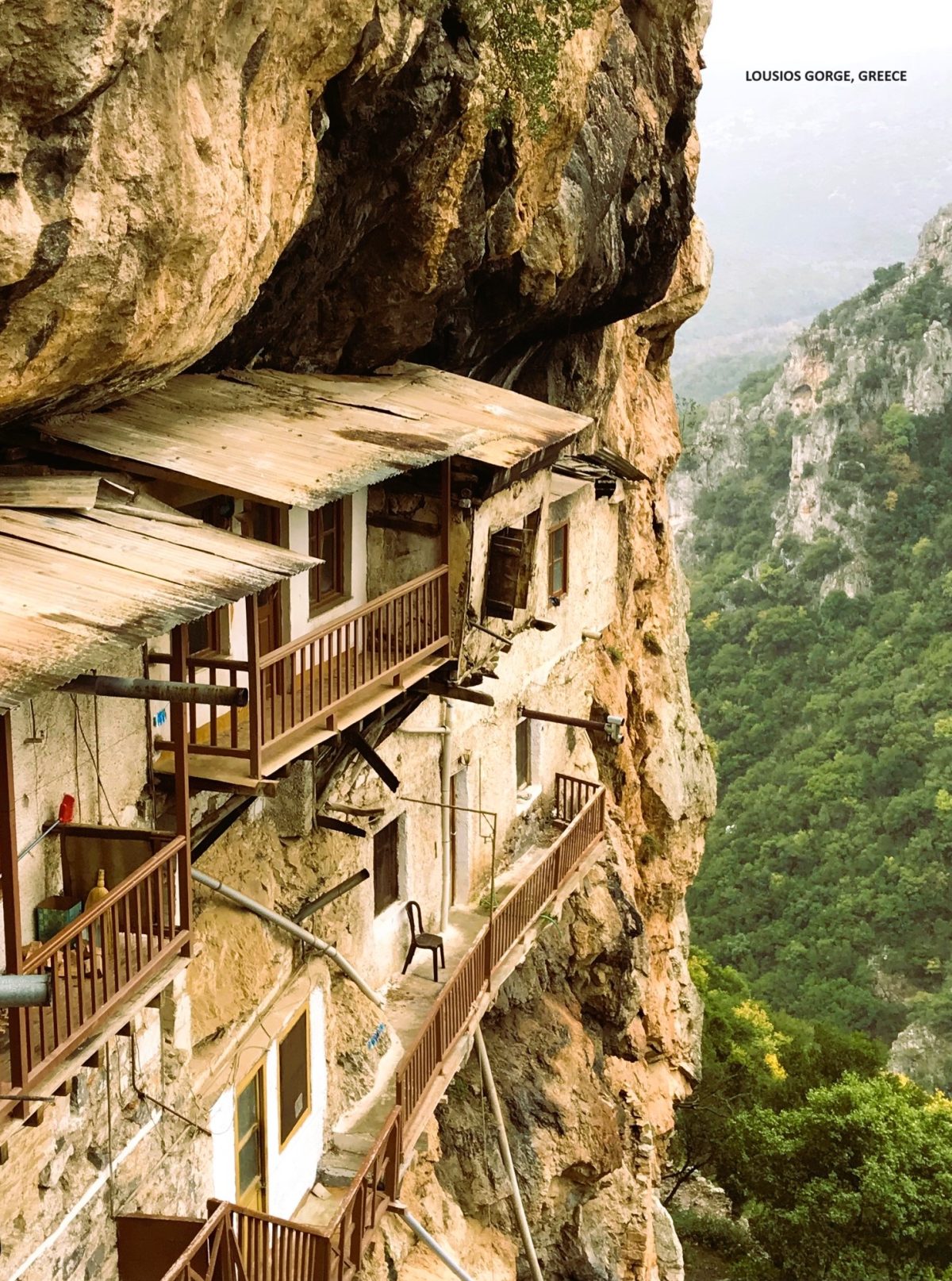Known locally as the “Jewel of the Costa Verde” the small waterfront city of Viana do Castelo is easily recognised by the magnificent 20th century white church (the Santuario de Santa Luzia) up on the nearby 228 metre hill of Monte de Santa Luzia. This church, inspired by the Sacre Coeur in Paris, honours Saint Lucy the Patron Saint of Sight which is most apt given the splendid views on offer from the top of the church both over the city and the surrounding area.


Our route into Galicia was taking us along Portugal’s coast road, through Viano do Castelo, when we noticed the Santuario and what looked like some kind of festival taking place down near the harbour. We parked up alongside a number of other vans down at the port (there was plenty of space) and set off for a quick look. Had we known that Viano do Castelo is one of the largest cities in the north of Portugal with a significant sized population and a history of shipbuilding and industrial fishing, we would in all likelihood have kept driving and given the place a miss because we tend to favour the smaller quieter places. We’re both so glad we didn’t! Our all too short stay in Viano do Castelo proved utterly charming, interesting and enjoyable and; yes… we had caught the last day of a week long local festival known as the Santos Populares but, more about that later.
We parked up on the commercial docks close to what looked like a hospital ship. It is named the ‘Gil Eannes’ and, amongst other things, it did serve as a type of hospital ship. After being built in the city’s shipyard during the 1950’s, it served as a general support vessel and icebreaker to Portugal’s ‘White Fleet’ of trawlers which fished for Cod in the North Atlantic off of Newfoundland and Greenland. After being decommissioned the ship was returned to Viano do Castelo and converted into a combined museum and youth hostel.

Drawn by church spires (they are a great aid to navigating cities) we made our way t0 Viano do Costelo’s well preserved medieval centre, the large and wholly pedestrianised Praca da Republica. This picturesque plaza is a large rectangle; edged by numerous 16th century buildings including the Pacos Municipais (the city hall) and the Igreja da Misericordia (which so far as I am concerned is the most beautiful of the city’s churches and outshines even the local 15th century Cathedral). The plaza contains a large 16th century fountain (Chafariz), a few small shops, cafes and restaurants (not forgetting a highly regarded Costume Museum) but it was a restaurant I needed (it was late in the morning and we’d not yet had breakfast) and so; after a quick look at the Igreja da Misericordia (the Saint Mary the Great Cathedral was almost entirely covered in scaffolding and closed), we settled down at one of the plaza restaurants (the Sancho Panza) for brunch.
Just a quick word on the Igreja da Misericordia or Church of Mercy. The original 16th century church was in such disrepair by the end of the 17th century that it had to be rebuilt. Work started early in the 18th century and the current church, with it’s Baroque style interior and impressive blue azulejos (tilework), is truly magnificent and well worth the one Euro entrance fee.

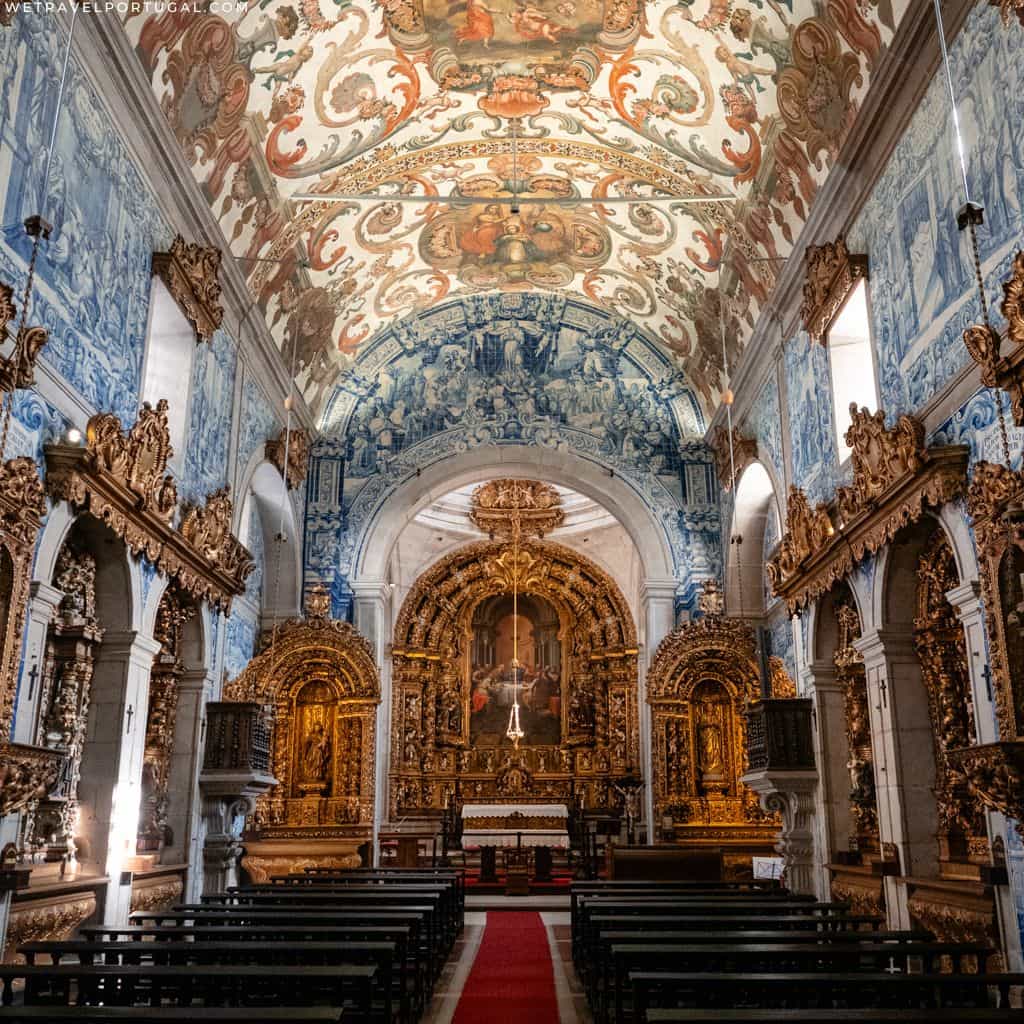
The food at the Sancho Panza Bar-Restaurant was the best of the trip so far with Vanya and I both agreeing the prawns (described in the menu as shrimps but the size of langostines) were the best we have ever tasted. I also enjoyed a bowl of Panadinhos de Porco (breaded pork) and I even ate some of Vanya’s salad. We were impressed with everything about the Sancho Panza. We sat at a table just outside the restaurant but a visit inside revealed a much larger place than expected, including a bar and an open kitchen. The service, as well as the food, was excellent and the price was very reasonable. I’d eat there again.
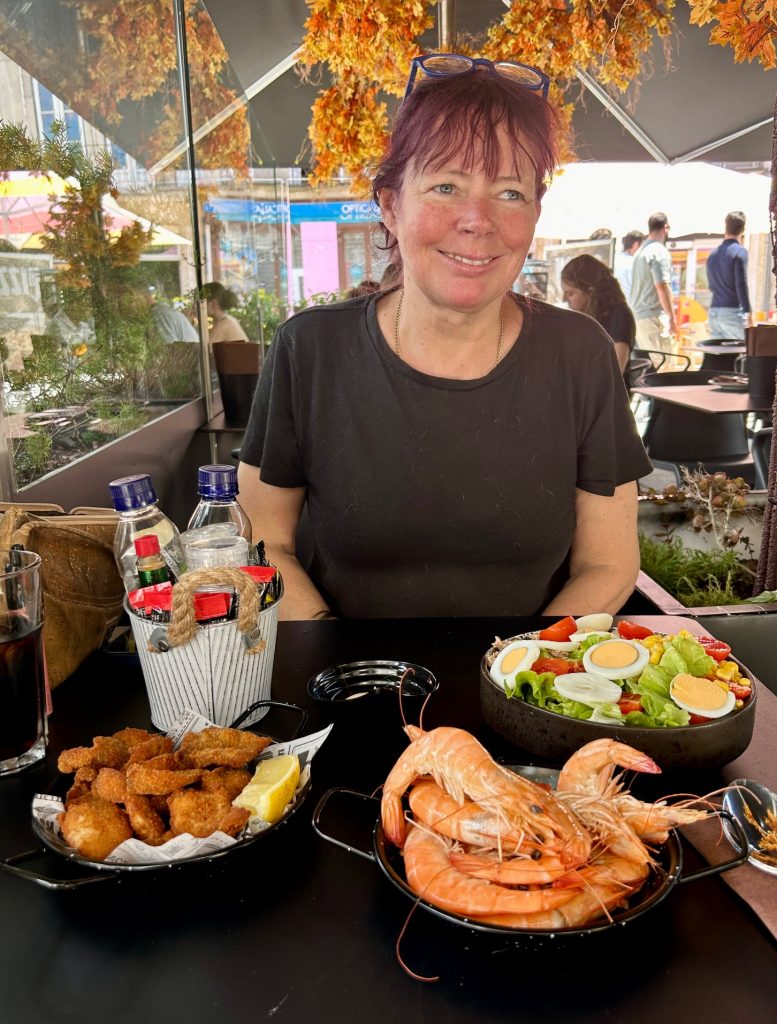


After brunch we made our way through various winding lanes of the old town (holding properties as diverse as fishermen’s cottages, smart art-deco town houses and elegant mansions) towards the Santiago de Barra Fort where the final day of the annual Santos Populares Festival was still in progress . The ‘popular saints’, by the way, are Saint Anthony, Saint John and Saint Peter.
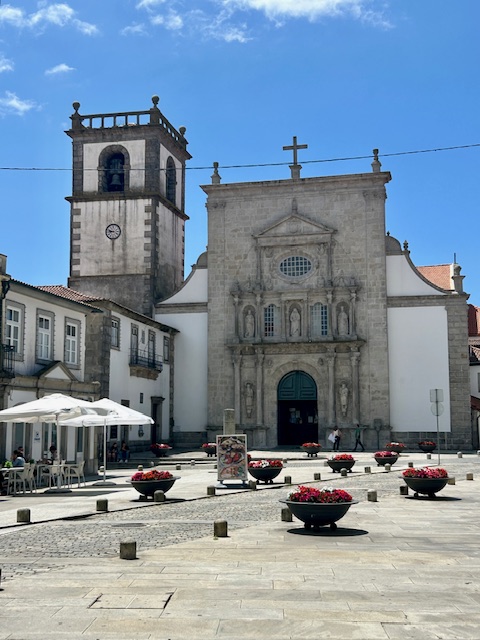
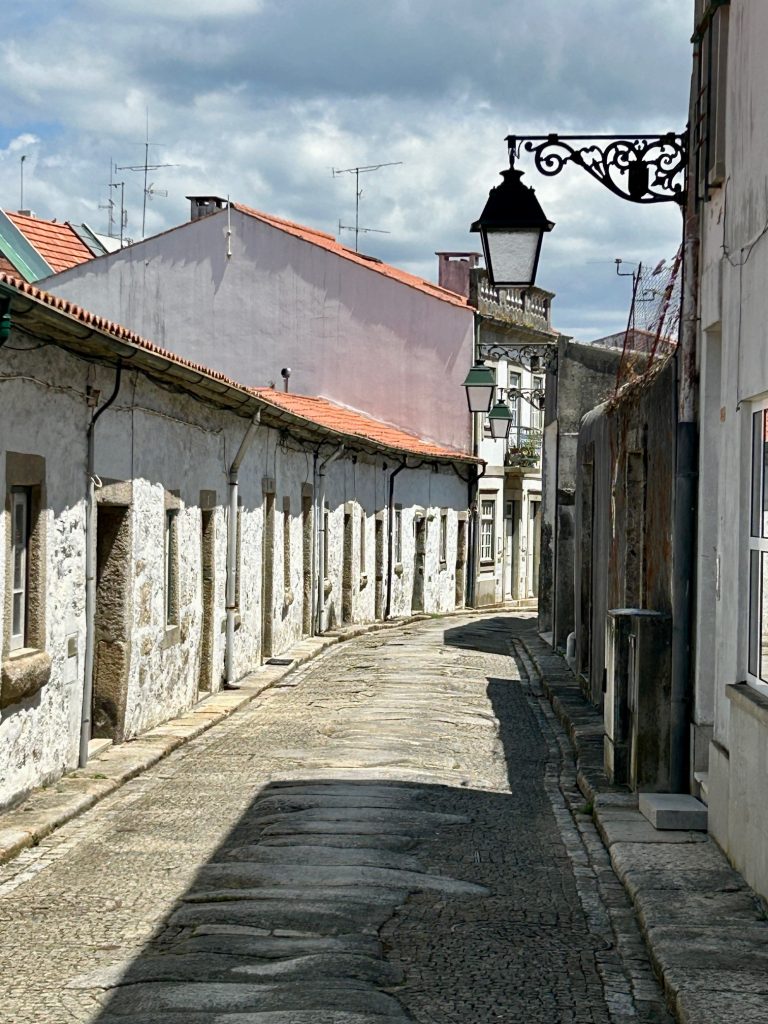
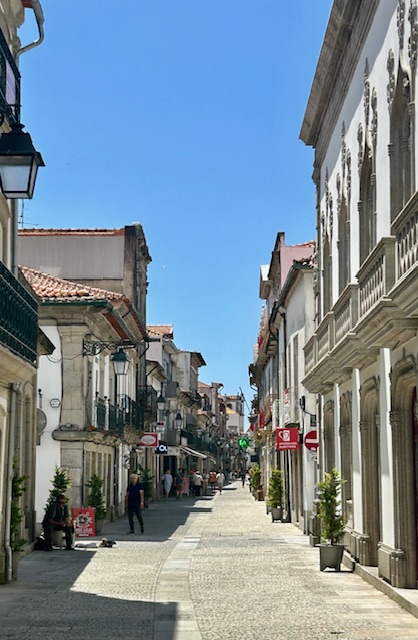

Many of the streets in the old town reflect the wealth of a country which, largely through the efforts of it’s seafaring explorers, become a world power during the 15th & 16th centuries. These explorers include Magellan who both orchestrated the first circumnavigation the world and himself navigated a ship around Cape Horn and into the Pacific Ocean; Bartolomeu Dias who first navigated the Cape of Good Hope into the Indian Ocean; Vasco de Gama who subsequently sailed around the Cape of Good Hope and became the first European to sail to the Indian Sub-Continent and; Pedro Avares Cabral who is credited with being the first European to discover Brazil. Between them these explorers helped create one of the world’s greatest international trading communities.
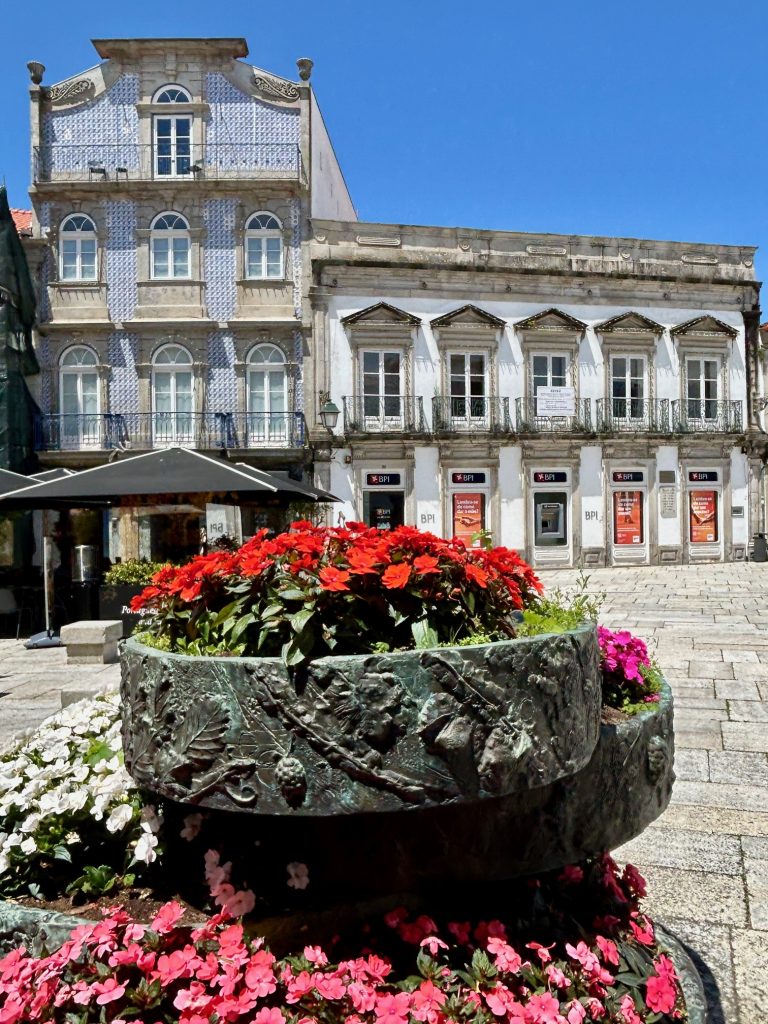
We entered the Santiago de Barra Fort the City’s fort in time to enjoy the last day of the Santos Populares Festival. Music and dance, especially Portuguese folk music and ‘fado’ (particularly soulful, mournful & moving performances) fill the days of the festival; with the highlight being the “Marchas Populares” where neighborhood groups vie with each other and showcase creative dance routines.
We couldn’t stay too long but we wholly enjoyed sitting, drinking freshly made lemonade while a local pipes and drums band entertained us with a repertoire of Moorish music. They made for a very enjoyable and interesting day and I swear one chap on the bagpipes could successfully audition for the Red Hot Chilli Pipers.
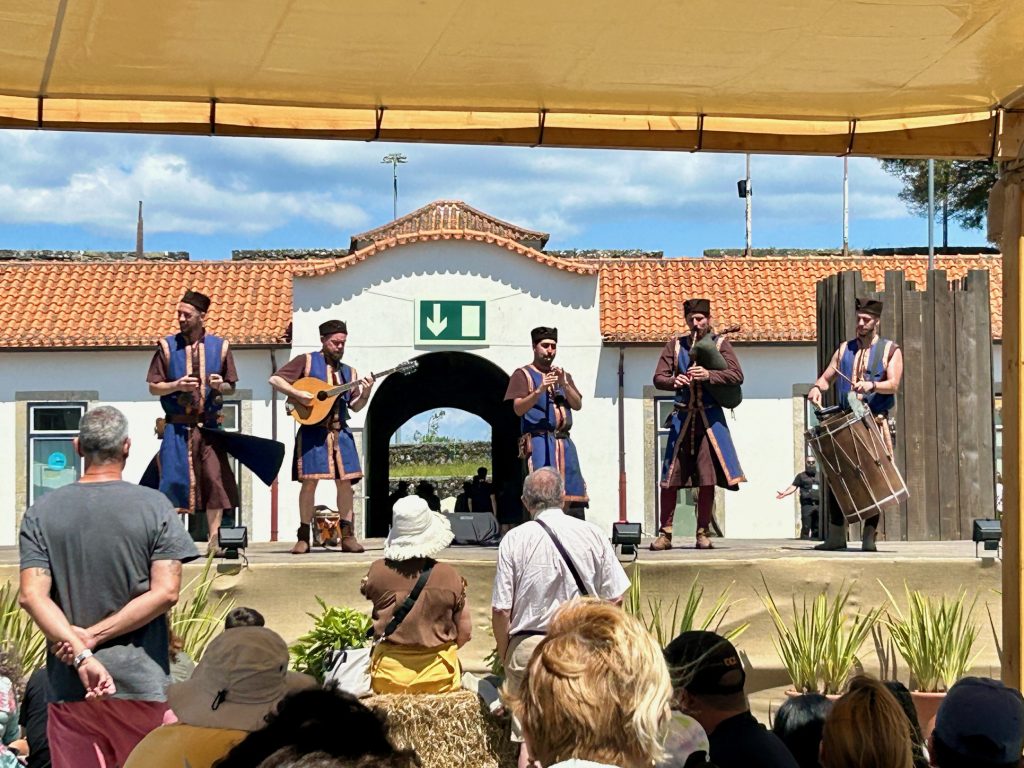
Heading back to the Van I received a very pleasant surprise. We passed near a multilevel road and rail bridge over the River Lima (with trains using the lower level). This bridge was designed and built in 1878 by no less an engineer than Alexandre Gustave Eiffel (he of Eiffel Tower fame). At the time, I was unaware Eiffel designed bridges but within the next couple of days I would stumble across yet another (see post for Caminha). They are really very distinctive lots of wrought iron.

Next stop was a small campsite in the tiny hamlet of Gelfa. We were heading for Galicia.

